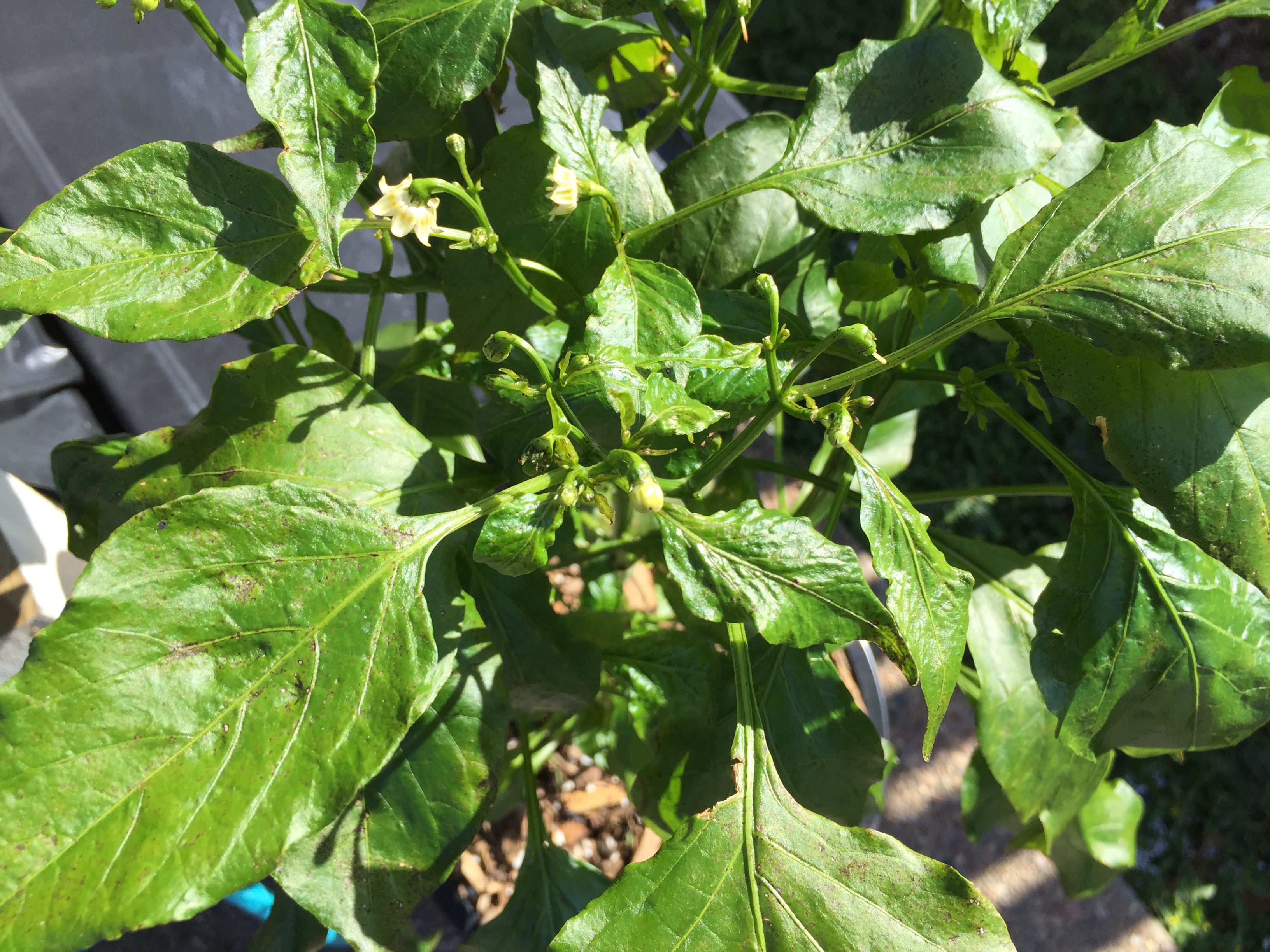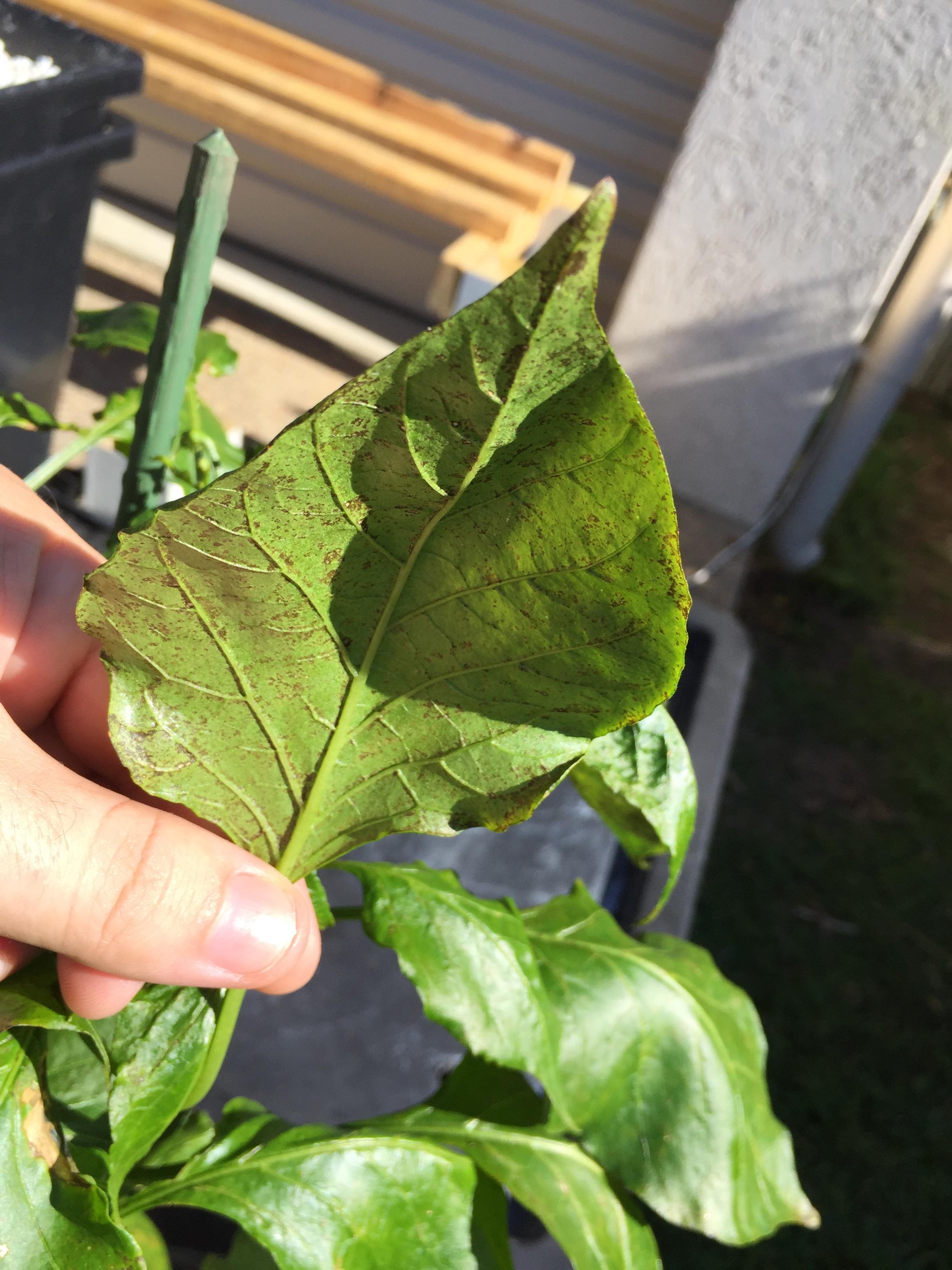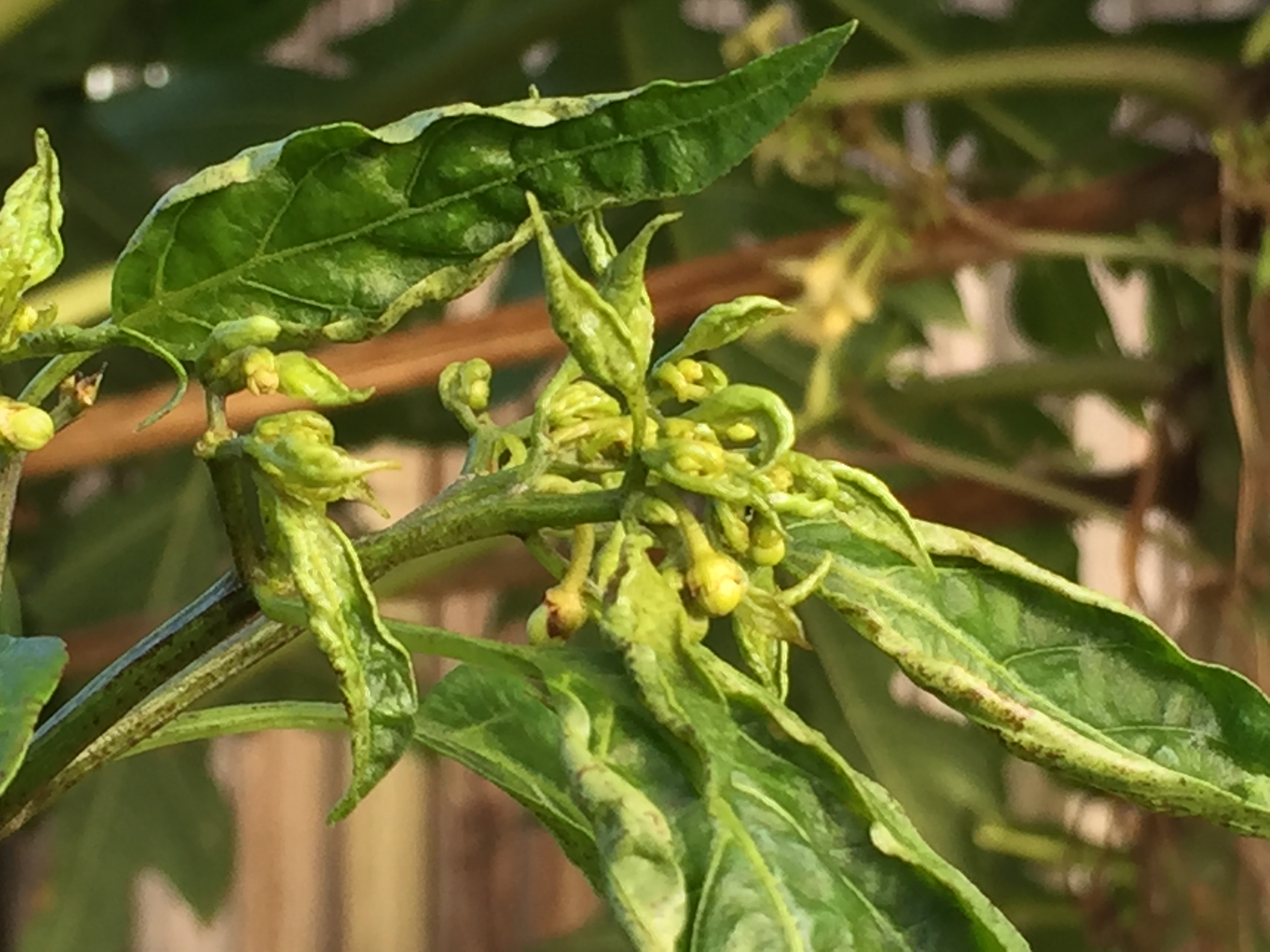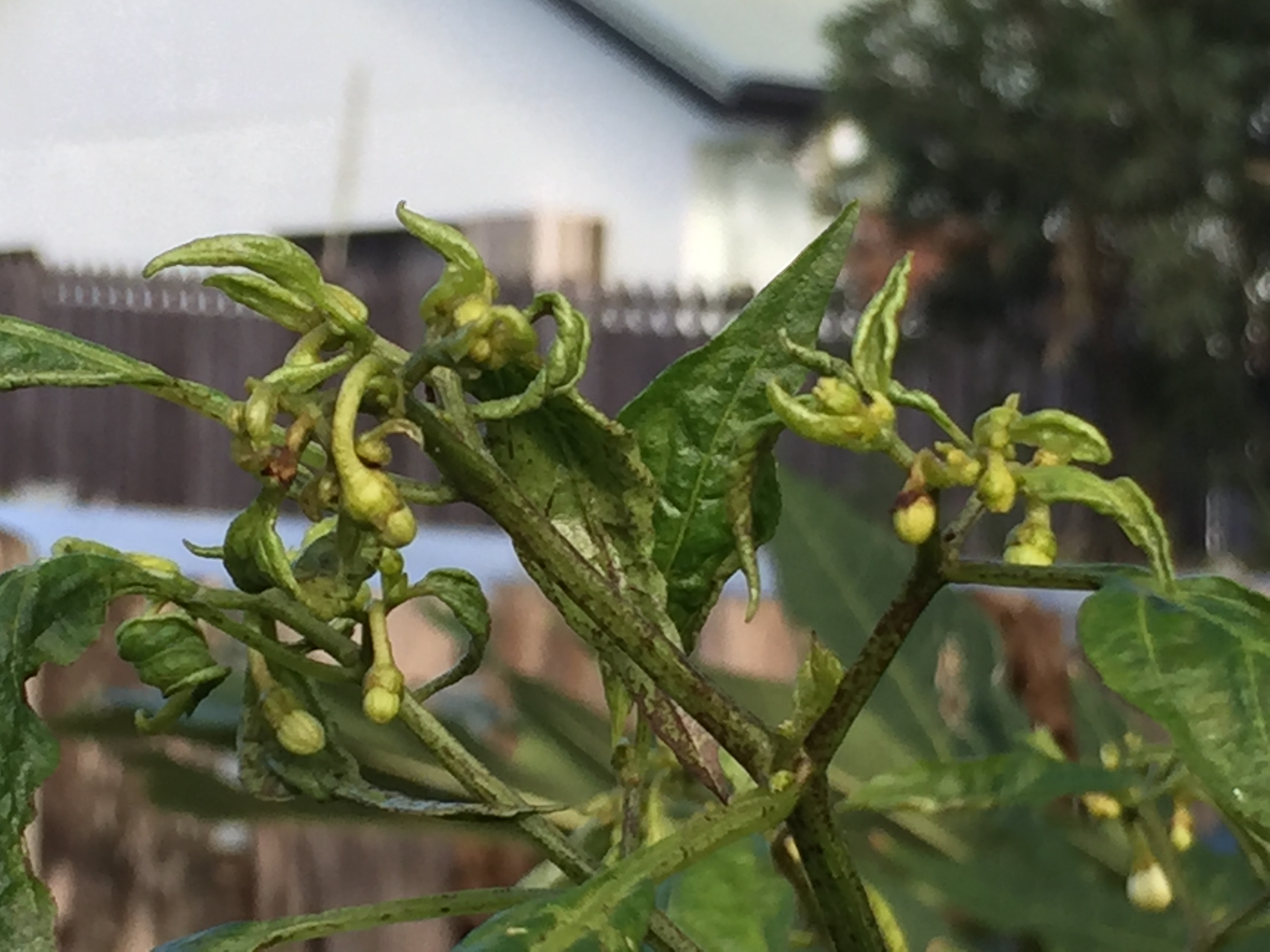-
Do you need help identifying a 🌶️?
Is your plant suffering from an unknown issue? 🤧
Then ask in Identification and Diagnosis.
You are using an out of date browser. It may not display this or other websites correctly.
You should upgrade or use an alternative browser.
You should upgrade or use an alternative browser.
disease-pests The curled leaves thing.....again
- Thread starter bentalphanerd
- Start date
Cayennemist said:
Make a bucket and try it on a small normal grow and test it and stop trolling my posts. I have seen it work on mites and aphids if applied weekly 3-4 times. You post lots of anti AACT bs and yet is is always about large comercial grows and without telling us how or what you put in it. I know AACT is not a cure all but it is the closest thing to one that I have seen.
I now this because of 3 years straight using it and watching infested "bonnie" plants turn in to healthy picture perfect plants.
So again
I don't want to here any doubters unless they have tried it! on hobby sized grows
miguelovic why don't you try it on a smaller more controllable scale and stop trolling my posts. I have seen nothing indicating you have done it other than your "word"
So once again
I am not presenting myself clearly or you are misinterpreting what I am saying. I am skeptical about the insecticidal properties of AACT, but have already conceded (from discussion and research) that many of the components are there for it to work just so. How that is anti-AACT is beyond me. I even suggested it as a solution to a pest problem (in addition to trying it out myself, on a small scale) in another thread following that original yak-about.
I've stated before how I brew.
Broad mites are not two-spots. Broad/cylclamen mites have broken growers across the glode with their resilience, and I think it's a little naive to recommend tea for something of that nature. I have not dealt with them myself as of yet, nor have you to my knowledge. If mild questioning of personal claims is regarded as trolling, I think you have a loose definition of the word. This is the second time, and in regards to a different pest.
Cayennmist, I enjoy reading your posts and learning from your experience. If you stated that you confirmed a case of BM and controlled it with AACT, much as you have with aphids and mites, I would take you at your word from the impression I have formed of you. Though admittedly I would remain mildly skeptical. What possible gain is there from deceiving others on a forum, short of some illgained internet notoriety? Sort of like faking a handicap to win the Special Olympics, nobody wins.
Either way, I think we can all agree the solution here is a heavy cocktail of avermectin and imidacloprid. Leave the tea for the hippy-dippies and the Brits

And before you think it, that was a joke. Google Van Isle, it's where non-urban-convert flower kids come from
Edit:
Cayennemist said:
Ah damn didn't even see that post. Now there's something with meat on it, though their methods seem a little rudimentary, it does provide strong support for control with AACT, specifically vermicompost tea (more chitin/chitinase?).
miguelovic said:Ah damn didn't even see that post. Now there's something with meat on it, though their methods seem a little rudimentary, it does provide strong support for control with AACT, specifically vermicompost tea (more chitin/chitinase?).
I use worm casting in every batch of AACT I make, So yes maybe compost tea without it would be less effective and I wouldn't know it. However most compost bins are loaded with worms and should at least have some castings in it.
So to specify, In my experience AACT made with worm castings, is extremely effective agents broad mites. And if used regularly it is effective for controlling aphids, thripps, and white flies.
So far the only pest it has no or little effect on is caterpillars, snail/slugs, and mammals.
Tea for broad mites? I guess if the tea is at 43-49C and you dunk the whole plant in it for 15 minutes, then sure it'd work!
I say stick to the known/proven methods if you want to keep any sort of crop at all, as I said, messing about with experimentation concerning broad mites is not recommended..
I say stick to the known/proven methods if you want to keep any sort of crop at all, as I said, messing about with experimentation concerning broad mites is not recommended..
moosery said:Tea for broad mites? I guess if the tea is at 43-49C and you dunk the whole plant in it for 15 minutes, then sure it'd work!
I say stick to the known/proven methods if you want to keep any sort of crop at all, as I said, messing about with experimentation concerning broad mites is not recommended..
What have you got to loose? and studies are showing that it does work by introducing pathogens and parasitic organisms to arthropods like aphids and mights.
Seriously don't knock it till you try it. I have seen it work, but yes my word is nothing on the internet and I get that, but ask some of the other experience grower like Guru whom uses it and experience the same thing.
And the world is flat so don't go to far out or you'll fall of the edge."I say stick to the known/proven methods if you want to keep any sort of crop at all"
Cayennemist said:
What have you got to loose?
Your entire crop. Within a week. Have you ever had broad mite? I have.
I'm not knocking it, I'm all for experimentation, but OP (well, the recent OP anyway!) needs to make an informed decision on how to save his plants.
Hot Head said:my plants are OUTSIDE!!!!!
a dunk is out of the question....cant I use a blowdryer?..lol
doh. Well, I guess I'm the wrong person to ask about that, here in the UK, broad mite doesn't really cope well outside so far as I know..I dumped some infected plants outside last year and within a couple days the broad mite were gone, but then so were the leaves, thanks to slugs.
Best guess outside would be try soap spray first, or neem oil. Oh, another thing you can do to reduce the numbers is get a REALLY strong water jet and blast them off. It won't get them all but it will surely help. Dont blast the leaves off though, lol.
Found the other post:
http://thehotpepper.com/topic/45676-leaf-issue/?hl=%2Bbroad+%2Bmites#entry961329
moosery said:
Your entire crop. Within a week. Have you ever had broad mite? I have.
I'm not knocking it, I'm all for experimentation, but OP (well, the recent OP anyway!) needs to make an informed decision on how to save his plants.
doh. Well, I guess I'm the wrong person to ask about that, here in the UK, broad mite doesn't really cope well outside so far as I know..I dumped some infected plants outside last year and within a couple days the broad mite were gone, but then so were the leaves, thanks to slugs.
Best guess outside would be try soap spray first, or neem oil. Oh, another thing you can do to reduce the numbers is get a REALLY strong water jet and blast them off. It won't get them all but it will surely help. Dont blast the leaves off though, lol.
Found the other post:
http://thehotpepper.com/topic/45676-leaf-issue/?hl=%2Bbroad+%2Bmites#entry961329
Do some research and tell me who is "informed". You honestly just blew off one of the best things for broad mites because YOU sir are not "informed."
The only person that put effort in debunking my claim even admitted it has potential. you on the other hand moosery just blew it of because you "know what you are talking about." Please research a little before just dismiss someones advise.miguelovic, on 01 Jun 2014 - 2:59 PM, said:
Cayennemist said:
Ah damn didn't even see that post. Now there's something with meat on it, though their methods seem a little rudimentary, it does provide strong support for control with AACT, specifically vermicompost tea (more chitin/chitinase?).
I have three plants with these symptoms, curiously, all are Bhuts.
Since they are outside, the 'dip' method is not an option, so out came the scissors.
As it is early in the season, and none of the plats are producing flowers, let alone pods, what are my options for chemical insecticide? Will Sevin work, or is there another?
Since they are outside, the 'dip' method is not an option, so out came the scissors.
As it is early in the season, and none of the plats are producing flowers, let alone pods, what are my options for chemical insecticide? Will Sevin work, or is there another?
alkhall said:I have three plants with these symptoms, curiously, all are Bhuts.
Since they are outside, the 'dip' method is not an option, so out came the scissors.
As it is early in the season, and none of the plats are producing flowers, let alone pods, what are my options for chemical insecticide? Will Sevin work, or is there another?
Depends who you ask - I did months of research (contrary to popular belief - lol) including lurking on forums, and found no conclusive evidence, I mean, usually on forums people would be able to eradicate them with just about any chemical they tried, but they would invariably come back within about ten days. This didn't happen in my case surprisingly - although I was incredibly (obsessively!) methodical even down to bleaching surfaces.
Of course for every person who whines on a forum, there could well be ten people who use one application of neem oil and it works so well it's not even worth writing down.
Like headlice, if your method doesn't kill the eggs, you'll have to repeat once they've hatched and before the next generation has chance to lay eggs.
Outdoors I think you have less control but at the same time you should theoretically have more favourable conditions, i.e. natural predators. The key can often be not to wipe out the predators around the area, which is where soap sprays can help. They are also recommended for broad mites as they appear to work as well as other insecticides, I forget where I read this.
Also worth mentioning that your climate will influence how well they can survive outdoors. Here in the UK, not so well!
I think predators (eg. amblyseius cucumeris, swirskii etc) work well in greenhouses but not outdoors. I would have used them but the missus didn't fancy me letting them loose in the house for some reason.
I'd personally probably go with soap spray, and cross my fingers, but whatever you do, be very methodical. I think that's the key, rather than which substance.
Well no - I lie. If I only had three affected plants, I'd cut them down to save the rest. That's an option but do check the other plants carefully first! They spread very readily due to them being very territorial, they will carry their mate a fair distance onto new foliage...
Worth mentioning that you should always get a sighting of a mite with a loupe before jumping to conclusions, a few things cause similar symptoms, but unless you can see the white specks running around (they move fairly fast for their size) then you wont know for sure.
There is strong support for mineral oil properly emusified, from the 1930's onwards.
That's all gold right there. I believe mis-application is probably the largest reason why people think alternative forms of control don't work. Badly emusified/mixed solutions and half-assed spraying go a long way towards damaging plants (the oft repeated "NEEM BURNED MY PLANTS" ranting) and breeding stronger bugs.
moosery said:I'd personally probably go with soap spray, and cross my fingers, but whatever you do, be very methodical. I think that's the key, rather than which substance.
Well no - I lie. If I only had three affected plants, I'd cut them down to save the rest. That's an option but do check the other plants carefully first! They spread very readily due to them being very territorial, they will carry their mate a fair distance onto new foliage...
Worth mentioning that you should always get a sighting of a mite with a loupe before jumping to conclusions, a few things cause similar symptoms, but unless you can see the white specks running around (they move fairly fast for their size) then you wont know for sure.
That's all gold right there. I believe mis-application is probably the largest reason why people think alternative forms of control don't work. Badly emusified/mixed solutions and half-assed spraying go a long way towards damaging plants (the oft repeated "NEEM BURNED MY PLANTS" ranting) and breeding stronger bugs.
(I found my answer..)
hi guys..... are these problems caused by mites? I have leaf curl/ deformed new growth and sick plants...
http://imgur.com/a/uCq5C

http://imgur.com/a/uCq5C

If upon close inspection, you don't see silky webs on the bottom surface of leaves, or at the crotch formed by nodes of the plants, then no, it isn't mites. In that case, it's environmental stress, or a deficiency. I've never had a mite problem where I couldn't see the evidence with naked eye, nor that I couldn't cure with a high pressure spray down.
If you are planted in a peat based substrate, you might want to try what Smokemaster calls "Witches Brew". (calcium/magnesium acetate) It is created by neutralizing dolomitic lime in white vinegar. If you are planted in a coco based substrate, you may try calcium acetate. I use ground eggshells with white vinegar for this. (addition of calcium to coco coir is mandatory for proper growth) With either of those concoctions, you'll use about 2 Tbsp per gallon. (roughly 30g per 4L)
If you are planted in a peat based substrate, you might want to try what Smokemaster calls "Witches Brew". (calcium/magnesium acetate) It is created by neutralizing dolomitic lime in white vinegar. If you are planted in a coco based substrate, you may try calcium acetate. I use ground eggshells with white vinegar for this. (addition of calcium to coco coir is mandatory for proper growth) With either of those concoctions, you'll use about 2 Tbsp per gallon. (roughly 30g per 4L)
solid7 said:If you are planted in a peat based substrate, you might want to try what Smokemaster calls "Witches Brew". (calcium/magnesium acetate) It is created by neutralizing dolomitic lime in white vinegar. If you are planted in a coco based substrate, you may try calcium acetate. I use ground eggshells with white vinegar for this. (addition of calcium to coco coir is mandatory for proper growth) With either of those concoctions, you'll use about 2 Tbsp per gallon. (roughly 30g per 4L)
I'm familiar with Smoke's Witches Brew, http://c2cpeppers.proboards.com/thread/3000/smokemasters-witches-brew, but not the other, got a recipe?
Will do.Brocoli said:If you want to know if its mites for sure, get a 80x mag (atleast) and take a look.
Nasty buggers.
few more pics. I think the mites caused the stunting of new growth, and then the plants got diseased. Thats my theory. any comments?


There really is no recipe for making the stuff. You basically just put eggshells into a coffee grinder - or use a mortar and pestle - and put the result into white vinegar. Basically, until it stops bubbling. When it's done, you can PH test a sample, and it should be somewhere near neutral. If you still have acidic tendencies, add more eggshells.I'm familiar with Smoke's Witches Brew, http://c2cpeppers.proboards.com/thread/3000/smokemasters-witches-brew, but not the other, got a recipe?
Dispense at a rate of a couple Tbsp per gallon, with every other watering, for about 3 times. Then, do it once a month, after that.



